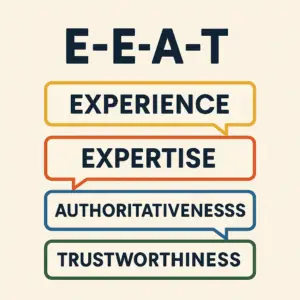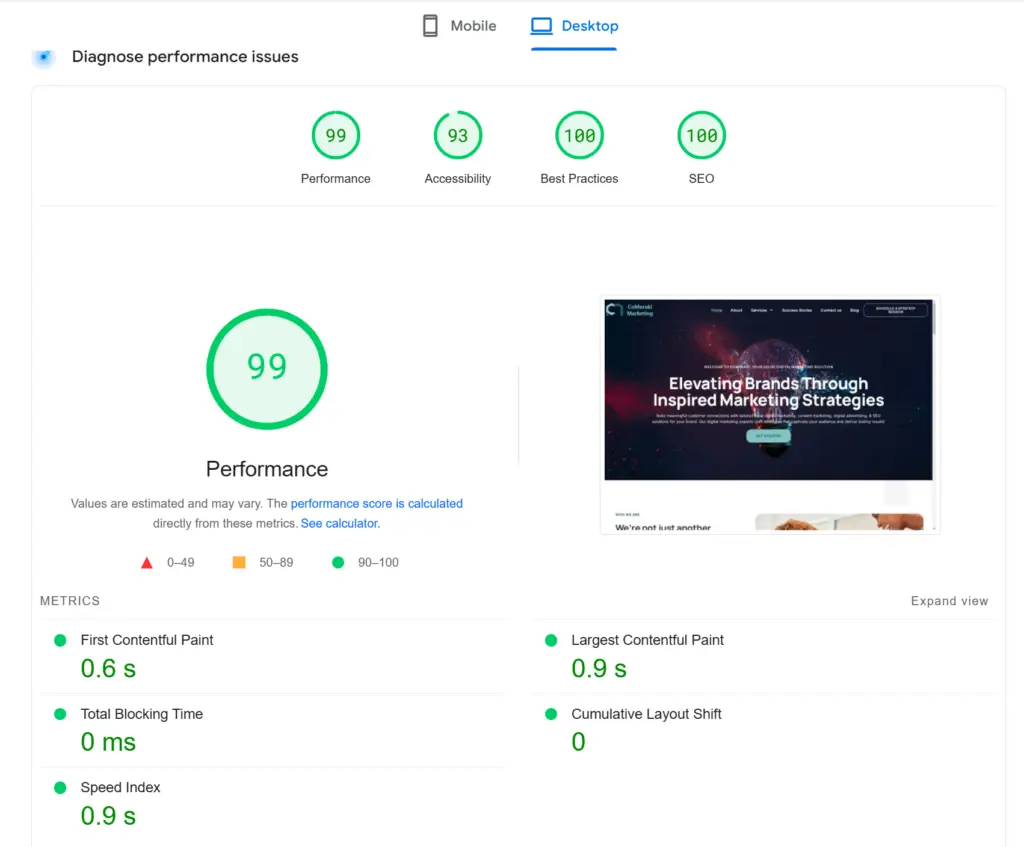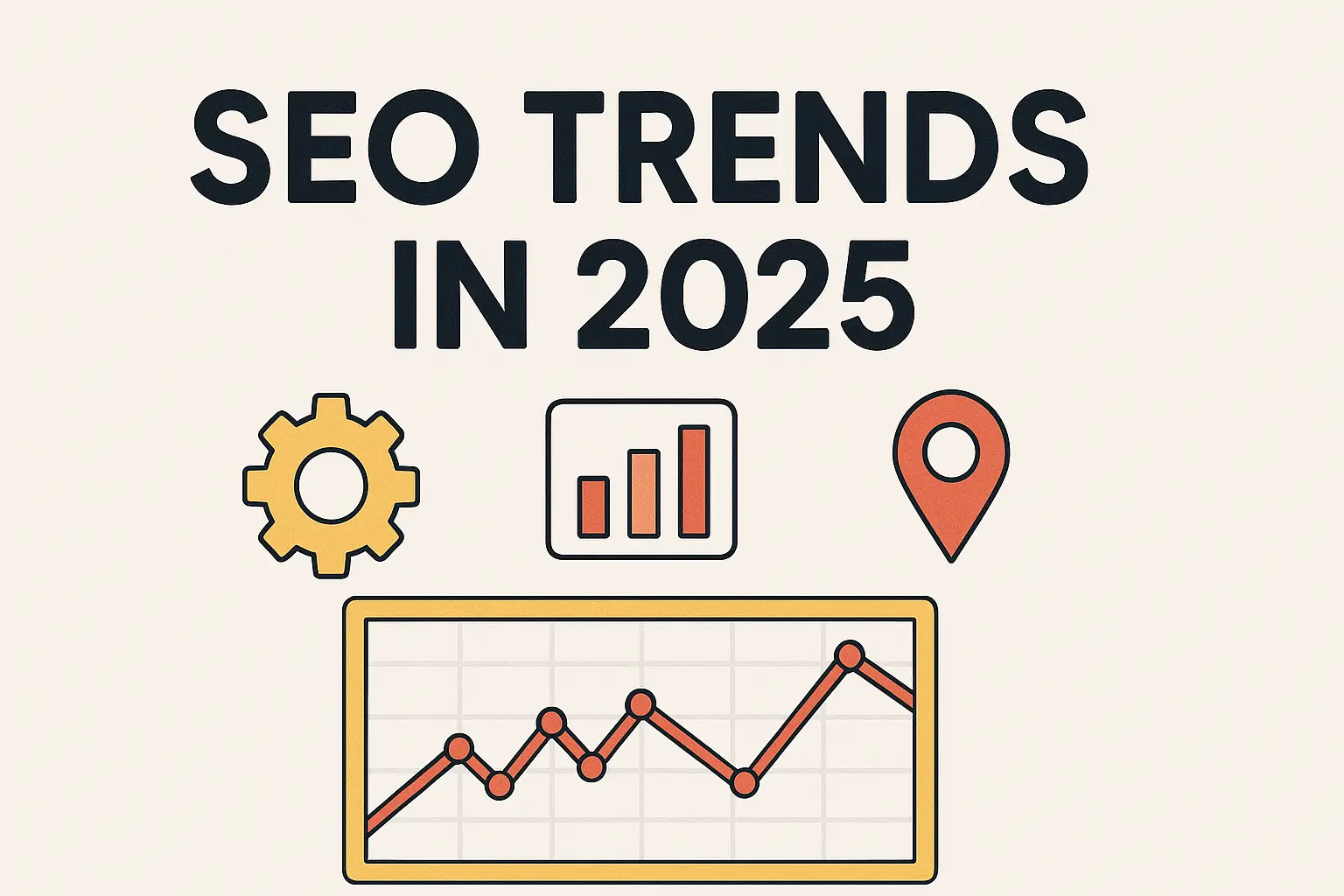Curious about SEO trends 2025? This article covers the key trends and strategies you need to prepare for. Discover how AI, zero-click searches, and user-centric content will impact your approach. Read on to stay ahead in the ever-evolving world of SEO.
Key Takeaways
AI is transforming SEO by emphasizing unique, structured content to enhance visibility, making automation in tasks like keyword research essential.
Zero-click searches are increasing, meaning content needs to be optimized for SERP features; adopting AEO strategies can help maintain visibility.
Focusing on user-centric content and E-E-A-T is crucial, with a strong emphasis on trust and authority to improve search rankings and engage users.
AI-Driven Search Results
 The world of SEO is being revolutionized by AI-driven search engines, reshaping how users find information and necessitating a shift in SEO strategies. Businesses are adapting their strategies as AI transforms the industry, allowing for increased automation of tasks like SERP analysis, keyword research, and content optimization. AI tools streamline the entire process from ideation to content generation, making it easier for marketers to enhance visibility and improve search rankings.
The world of SEO is being revolutionized by AI-driven search engines, reshaping how users find information and necessitating a shift in SEO strategies. Businesses are adapting their strategies as AI transforms the industry, allowing for increased automation of tasks like SERP analysis, keyword research, and content optimization. AI tools streamline the entire process from ideation to content generation, making it easier for marketers to enhance visibility and improve search rankings.
AI-generated content must be structured for easy retrieval by AI models to enhance visibility. Google evaluates AI-generated content by valuing uniqueness and its contribution to the conversation, making it crucial for brands to focus on reputable content, solid links, and real audience value. This holistic approach ensures that both paid and organic search strategies are integrated, with organic search often yielding better long-term traffic and ROI compared to paid search.
In essence, AI-driven search results are not just a trend but a fundamental shift in how search engines understand and respond to search queries. Leveraging AI tools and producing high-quality, structured content keeps businesses ahead in the competitive search engine results market.
Rise of Zero-Click Searches
 Zero-click searches are on the rise, providing consumers with immediate answers without visiting websites. As of 2024, approximately 58.5% of Google search in the U.S. result in zero clicks. This trend indicates that many users may not be looking for website visits but rather direct answers, which significantly impacts traditional SEO strategies.
Zero-click searches are on the rise, providing consumers with immediate answers without visiting websites. As of 2024, approximately 58.5% of Google search in the U.S. result in zero clicks. This trend indicates that many users may not be looking for website visits but rather direct answers, which significantly impacts traditional SEO strategies.
The prevalence of zero-click searches means a decrease in organic click-through rates due to the dominance of search engine results page features like featured snippets, knowledge panels, and AI overviews. These features often occupy most of the screen, hindering click-through for other websites. To capture attention even without clicks, it’s essential to use bold, clear meta titles and descriptions.
Marketers should now incorporate zero-click search strategies into their 2025 plans by identifying keywords that trigger SERP features using tools like the Keyword Magic Tool. Additionally, adopting AEO (Answer Engine Optimization) strategies can help optimize for new answer engines, ensuring that content still reaches its target audience.
Adapting to zero-click searches involves transforming the entire search experience to better meet user intent, enabling businesses to maintain search traffic and visibility in an evolving SEO landscape.
User-Centric Content Creation
Understanding consumer intent is critical as search queries evolve into more complex interactions. SEO is shifting from a keyword-centric approach to one focused on user intent and context. This means creating content that directly addresses real user questions and needs, whether they are informational, transactional, or navigational, to identify search intent.
AI-driven search emphasizes the importance of high-quality, well-structured content, making clarity and user value more crucial than ever. This shift requires a deep understanding of user behavior and the ability to create content that not only ranks well but also engages and retains users. Structuring content for easy reading, including using formatting and FAQs, enhances user engagement and helps answer complex queries more effectively.
The rise of community-driven content means that engaging in platforms like forums and social media is essential for maintaining search visibility. Participating in these communities and leveraging user-generated content helps brands build trust and authority, enhancing their SEO efforts. Ultimately, user-centric content creation is about putting the audience first, ensuring that content is relevant, engaging, and valuable.
Importance of E-E-A-T in 2025
 Websites that prioritize trust are likely to achieve better visibility in search results, making E-E-A-T (Experience, Expertise, Authoritativeness, and Trustworthiness) a key trend in 2025. Trustworthiness serves as the foundation of E-E-A-T, guiding Google’s evaluation of all other components. Maintaining transparency in content, especially regarding affiliate partnerships, enhances trust and is crucial for effective SEO.
Websites that prioritize trust are likely to achieve better visibility in search results, making E-E-A-T (Experience, Expertise, Authoritativeness, and Trustworthiness) a key trend in 2025. Trustworthiness serves as the foundation of E-E-A-T, guiding Google’s evaluation of all other components. Maintaining transparency in content, especially regarding affiliate partnerships, enhances trust and is crucial for effective SEO.
To boost trust, accuracy in claims through reliable sources is essential. The surge of AI-generated content makes the differentiation of authentic, experience-based content even more important. Experiential content leveraging internal data and expert input is likely to rise in SEO rankings in 2025. This involves content by knowledgeable authors who can demonstrate experience and expertise, sharing unique insights and developing author pages that highlight qualifications.
Content related to health, finances, safety, or societal issues requires a higher emphasis on E-E-A-T. As Google continues to refine its algorithms, the recognition of authors as subject-matter experts will elevate content authority, ensuring that only the most trustworthy and valuable information rises to the top. Focusing on E-E-A-T allows businesses to stay ahead and maintain their search rankings in a competitive environment.
Enhanced Role of Schema Markup
Schema markup significantly enhances visibility in AI-driven search results by providing structured data that search engines can easily interpret. Acting as a crucial translator, schema markup helps search engines comprehend website content, increasing the likelihood of appearing in relevant search results. This makes it an essential tool in modern SEO strategies.
FAQ and HowTo schema types allow content creators to structure data, enhancing how search engines display and provide information to users. Product schema enables businesses to highlight details like pricing and availability in search results, boosting clicks and conversions. Rich results made possible by effective schema markup can deliver additional visuals and information that capture user attention more effectively.
Schema markup provides greater control over online representation, minimizing the risk of misinterpretation by search engine algorithms. Applying schema markup such as FAQ, HowTo, and Product can increase visibility and engagement in AI-driven answers on SERPs. In essence, schema markup is not just a technical enhancement but a strategic one, ensuring that content is accurately represented and highly visible in search results.
Leveraging Short-Form Video Content
Platforms like TikTok encourage user-generated content, allowing brands to interact with users through challenges and creative collaborations. YouTube Shorts, TikTok, and Instagram Reels are increasingly being pulled into Google results, making short-form video content a vital part of SEO strategies. These platforms not only enhance user engagement but also expand reach and visibility.
Embedding short-form videos in blog posts boosts dwell time and engagement, making content more interactive and appealing. Highlights from written content should be used to inspire short-form video scripts, ensuring that the videos are relevant and valuable to the audience. Optimizing short-form video content with keywords in titles and captions further enhances visibility and searchability.
Leveraging short-form video content allows businesses to create a dynamic user experience, driving more traffic and improving SEO performance. This strategy not only caters to the growing preference for video content but also aligns with the latest SEO trends, ensuring that content remains fresh and engaging.
Local SEO Strategies
Local SEO is crucial as searches with local intent can significantly boost traffic and visibility for businesses. Improving local search rankings involves fully optimizing and regularly updating the Google Business Profile (GBP). This includes maintaining NAP (Name, Address, Phone number) consistency across various platforms, which helps validate a business’s legitimacy to search engines.
Utilizing local keywords in content, particularly in titles and descriptions, can enhance visibility in local search results. Creating unique landing pages for different locations can help businesses rank for specific local queries even in areas they don’t physically serve. Engaging with local communities through sponsorships or events can provide valuable backlinks and enhance local SEO efforts.
Keeping Google Business Profiles updated with fresh information, questions and answers, and posts ensures they remain relevant and informative. Building geo-targeted backlinks and seeking features in relevant local or niche sources are additional strategies to boost local SEO. By focusing on these strategies, businesses can effectively capture local search traffic and improve their overall SEO performance.
Regular Content Updates
Regular content updates are necessary to maintain relevance and trust, particularly in rapidly changing fields. Conducting regular content audits helps identify outdated information that needs revising or expanding, ensuring that content remains accurate and up-to-date. Using analytics to track content performance can reveal which pieces need updates based on user engagement.
Regularly refreshing content prevents it from becoming stagnant and losing visibility in search results. This involves revising existing content, adding new information, and ensuring that it aligns with current trends and user needs. Keeping content fresh and relevant improves user engagement and maintains search rankings.
In a world where information is constantly evolving, staying proactive with content updates is a vital SEO strategy. It not only enhances user experience but also ensures that content continues to meet the needs of the target audience, driving sustained organic traffic.
Privacy-First Analytics
With the decline of third-party cookies, new privacy-friendly tracking technologies are being developed, focusing on user anonymity. Google’s Privacy Sandbox aims to replace cookie-based tracking with API-driven methods, set to roll out in 2024. These changes highlight the shift towards a more privacy-first approach in analytics.
Consent Management Platforms are becoming essential for marketers to inform users about data usage and secure their consent for data collection. Server-side tracking offers greater control over data sharing compared to traditional client-side tracking methods. Consent-friendly analytics tools such as Fathom or Plausible should be used to ensure compliance with privacy regulations.
Optimization should focus on on-site actions such as email signups, account creation, or gated content, prioritizing meaningful engagement over pixel tracking. Adopting privacy-first analytics helps businesses build user trust while gaining valuable insights to drive SEO strategies.
Optimizing User Experience (UX)

Core Web Vitals assess real-world user experience, focusing on loading performance, interactivity, and visual stability. Enhancing user experience involves aiming for Largest Contentful Paint (LCP) within 2.5 seconds. Achieving a Cumulative Layout Shift (CLS) score of less than 0.1 is crucial for visual stability, while improving responsiveness requires an Interaction to Next Paint (INP) of under 200 milliseconds.
User experience significantly influences positive user signals, making it a vital component of SEO success. Shifting focus entirely on mobile user experience is essential, as mobile devices continue to dominate web traffic. Creating a user-friendly website involves optimizing page speed and navigation for ease and intuitiveness.
Regularly updating content on a website improves user experience and search engine ranking, as Google uses Core Web Vitals to assess the user-friendliness of a site. Prioritizing UX helps businesses achieve sustainable organic growth and better search rankings, ensuring a positive user experience.
Summary
As we’ve navigated through the top 10 SEO trends for 2025, it’s clear that the landscape of search engine optimization is undergoing significant transformations. From the rise of AI-driven search results and zero-click searches to the emphasis on E-E-A-T and the role of schema markup, each trend highlights the importance of adapting to new technologies and user behaviors. Understanding and implementing these trends will not only enhance your search visibility but also ensure that your content remains relevant and engaging.
To stay ahead, focus on creating high-quality, user-centric content, leveraging AI tools, and continuously updating your strategies. Embrace privacy-first analytics, optimize for local searches, and prioritize user experience to meet the evolving demands of search engines and users alike. By doing so, you’ll be well-equipped to navigate the dynamic SEO landscape of 2025 and beyond.
Frequently Asked Questions
What is the biggest change in SEO for 2025?
The biggest change in SEO for 2025 is the rise of AI-driven search results, making it essential to adapt your strategies for keyword research and content optimization. Embrace these advancements to stay ahead!
How can I optimize for zero-click searches?
To effectively optimize for zero-click searches, prioritize identifying keywords that activate SERP features and make sure your meta titles and descriptions are clear and engaging. This strategy can significantly boost your visibility in search results.
Why is E-E-A-T important for SEO?
E-E-A-T is key for SEO because it helps Google assess the trustworthiness and expertise of your content, which is vital for ranking well, particularly in sensitive areas like health or finance. Prioritizing E-E-A-T can significantly boost your visibility and credibility online.
How does schema markup improve SEO?
Schema markup boosts your SEO by helping search engines understand your content better, which can lead to improved visibility and eye-catching rich snippets in search results. This means more users will likely notice and click on your website!
What are Core Web Vitals and why are they important?
Core Web Vitals are essential metrics that measure user experience on your site, focusing on loading speed, interactivity, and visual stability. They matter because they directly impact user satisfaction and can boost your search rankings.





